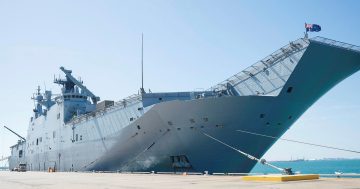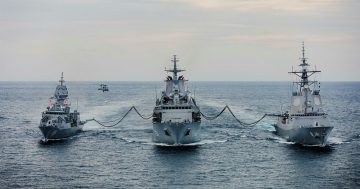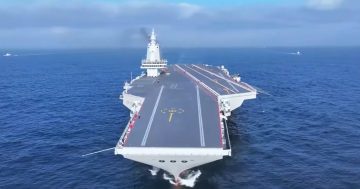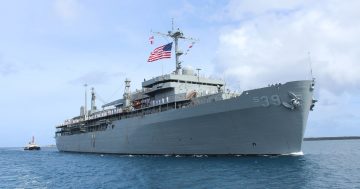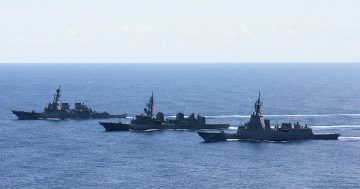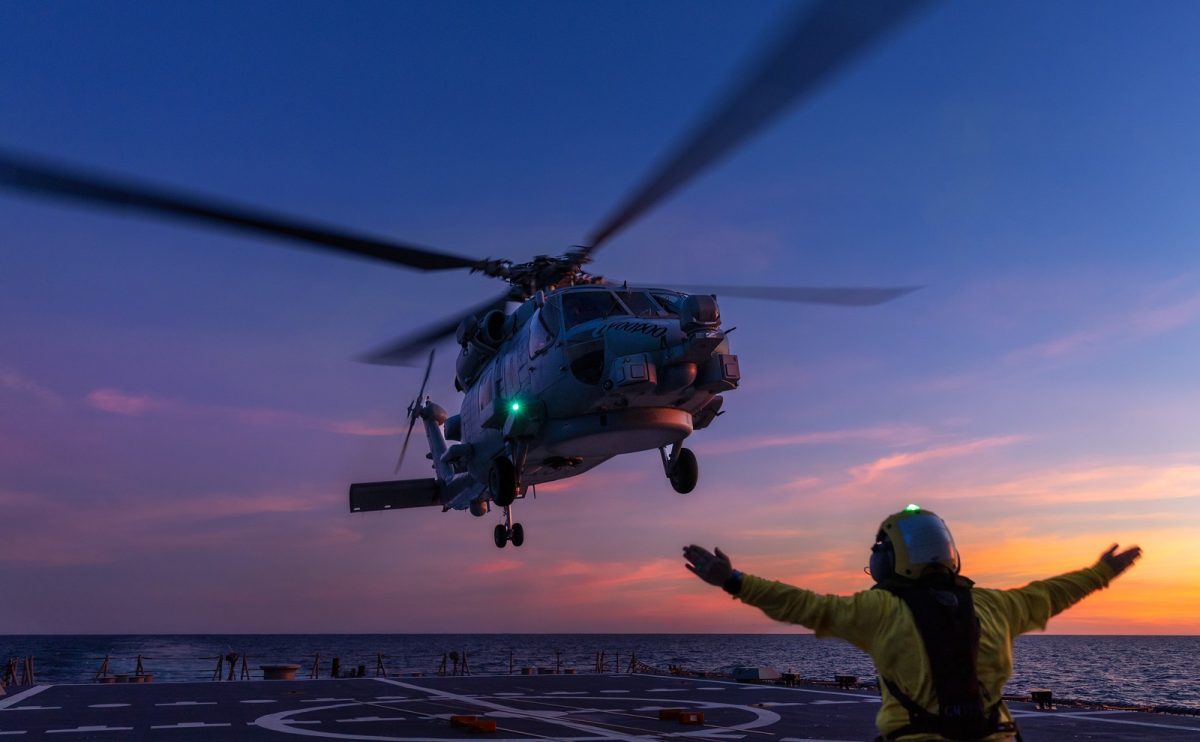
HMAS Hobart‘s MH-60R Romeo Seahawk Voodoo conducts evening flight operations. Photo: ADF.
A Royal Australian Navy helicopter flying in international waters was reportedly intercepted and had flares dropped in its path by a Chinese fighter jet on Saturday (4 May).
The Sikorsky MH-60R Romeo Seahawk Voodoo was flying from the destroyer HMAS Hobart in the Yellow Sea while the ship was participating in Operation Argos, Australia’s contribution to United Nations Security Council sanctions against North Korea.
The helicopter had taken off from HMAS Hobart shortly before being intercepted by the People’s Liberation Army Air Force (PLA-AF) Chengdu J-10 fighter that allegedly dropped flares 300 metres in front of and 60 metres above the helicopter’s flight path. The helicopter took evasive action to avoid the flares and returned safely to the ship.
While flares employed by combat aircraft are not guided or ‘fired at’, they are designed to be released and to burn brightly for a few seconds to distract incoming infra-red guided missiles. If they make contact with a flammable surface or are ingested into an aircraft’s engine intake, they can cause considerable damage to an engine and the aircraft.
HMAS Hobart and its complement of 230 sailors departed Sydney in early April on a three-month regional security mission to north Asia.
Operation Argos involves the surveillance of illegal ship-to-ship transfers of sanctioned goods. North Korea has been known to send its own ships out to meet inbound or outgoing cargo ships with false destinations in China or elsewhere to load or offload cargo covered by the sanctions.
The UN Security Council sanctions are designed to restrict North Korea’s imports of refined petroleum and crude oil and its exports of coal, all of which have been facilitated by at-sea transfers.
Overnight, Defence Minister and Deputy Prime Minister Richard Marles described the Chinese actions as “unsafe” and “unprofessional” and said the Australian Government has expressed its concerns to the Chinese Government about the interaction.
However, despite the warming of trade and diplomatic ties in recent years, the PLA’s actions are part of a continuing pattern of unsafe interactions with the Australian Defence Force.
Last November, RAN divers from HMAS Toowoomba, which was stopped in international waters in Japan’s exclusive economic zone, were clearing fishing nets that had fouled the vessel’s propellor when a PLA-Navy destroyer approached. Despite being warned that diving operations were underway and to keep clear, the Chinese vessel activated its hull-mounted sonar, causing minor injuries to the divers.
In May 2022, a Royal Australian Air Force P-8A Poseidon maritime patrol aircraft flying in international airspace over the South China Sea was intercepted by a PLA-N J-16 fighter, which also released flares in the flight path of the Australian aircraft before cutting across the P-8A’s nose in an unsafe manner.
The PLA-N, Chinese Coast Guard, and Chinese militia ‘fishing boats’ have also become more aggressive in recent years, particularly against Philippine military and commercial vessels in the South China Sea. This aggression has led the Philippines to explore closer ties with the US, Japan and Australia in an effort to counter China’s increasing belligerence.
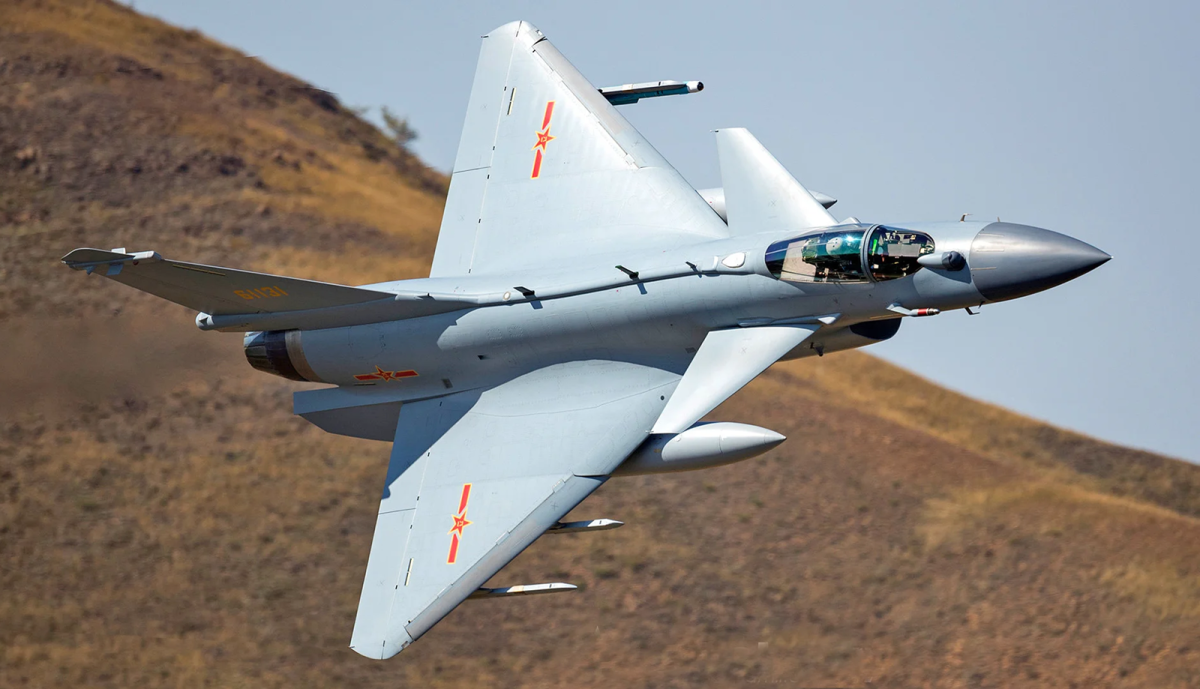
The PLA-AF’s J-10C is roughly equivalent to the US F-16C fighter in size and capability. Photo: Chinese military.
Last week, at a summit of defence leaders held in Hawaii, the four countries agreed to conduct more frequent freedom of navigation exercises and joint military manoeuvres.
In a joint communique from the summit, Mr Marles, Japanese Minister of Defense Kihara Minoru, the Philippines Secretary of National Defense Gilberto Teodoro, and US Secretary of Defense Lloyd Austin expressed serious concern about the situation in the East and South China Seas.
It reads, “They strongly objected to the dangerous use of coast guard and maritime militia vessels in the South China Sea.”
“They reiterated serious concern over the PRC’s repeated obstruction of Philippine vessels’ exercise of high seas freedom of navigation and the disruption of supply lines to Second Thomas Shoal, which constitute dangerous and destabilising conduct.
It added, “The leaders emphasised their commitment to strengthen cooperation in support of regional security and stability.”
“They underscored that multilateral defence cooperation among the four countries is growing stronger than ever and welcomed progress in coordination at all levels.”
Original Article published by Andrew McLaughlin on PS News.












